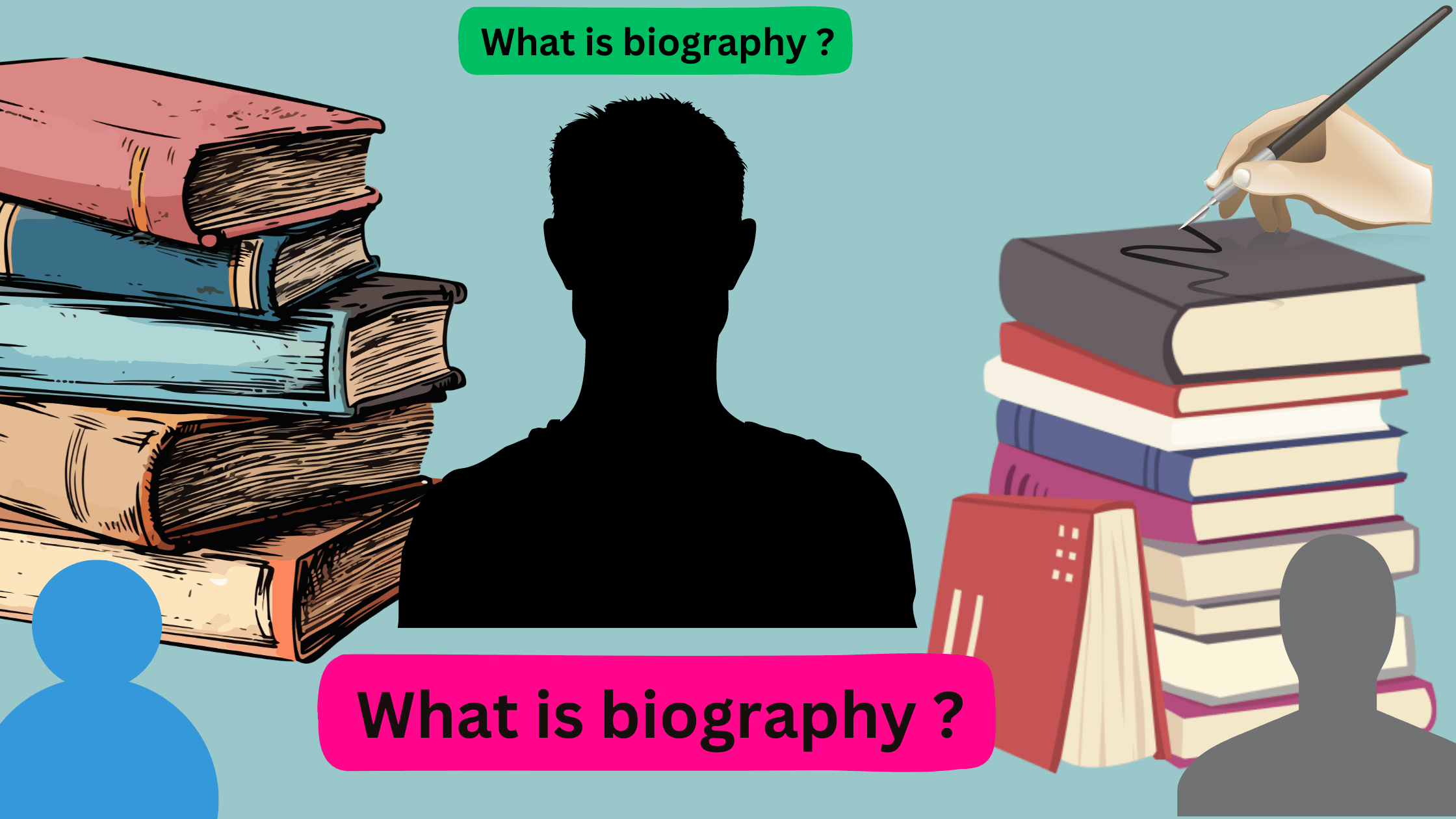How to Tell a Life Story Through Biographies
In a world filled with captivating stories, finding a way to tell a life story that truly resonates with readers can be a remarkable feat. Biographies serve as a powerful medium, providing a window into the lives of extraordinary individuals who have shaped history. But how can you craft a narrative that captures the essence of a person’s journey? In this article, we delve into the art of telling a life story through biographies.
Whether you’re writing about a historical figure, a celebrity, or an unknown hero, it’s crucial to delve beyond the surface and uncover the defining moments, struggles, and triumphs that shaped their lives. We explore the importance of thorough research, engaging storytelling techniques, and the delicate balance between factual accuracy and creative interpretation. By understanding the essence of your subject and weaving a compelling narrative, you can transport readers on a journey through time, evoking emotions and uncovering universal truths.
Join us as we unravel the secrets to crafting captivating biographies that leave a lasting impact. Explore the power of storytelling and the role it plays in preserving and honoring the legacies of remarkable individuals.
The importance of storytelling in biographies
Biographies are more than just a collection of facts and dates – they are powerful narratives that have the ability to captivate readers and transport them through the extraordinary lives of remarkable individuals. Storytelling is the heart and soul of a biography, as it allows the writer to breathe life into their subject, revealing the complex tapestry of their experiences, emotions, and motivations.
At the core of every great biography is a compelling story that resonates with the reader on a deep, emotional level. By weaving together the threads of a person’s life, biographers have the unique opportunity to uncover the universal truths and profound insights that lie within their subject’s journey. Through the art of storytelling, they can shed light on the triumphs and struggles, the moments of joy and despair, and the pivotal decisions that ultimately shaped the course of an individual’s life.
The power of storytelling in biographies lies in its ability to humanize and connect the reader with the subject. By bringing the person to life on the page, biographers can foster a sense of empathy and understanding, allowing readers to walk in the shoes of their subject and gain a deeper appreciation for the complexities of the human experience. This emotional connection is what elevates a biography from a mere recitation of facts to a transformative, immersive journey that leaves a lasting impact on the reader.
Researching and gathering information for a biography
Crafting a captivating biography begins with meticulous research and a deep dive into the life of the subject. The biographer must become a detective, scouring through historical records, personal archives, and primary sources to uncover the rich tapestry of their subject’s life.
One of the key aspects of this research process is gaining a comprehensive understanding of the historical and cultural context in which the subject lived. By immersing themselves in the time period, the biographer can better contextualize the individual’s experiences, decisions, and the challenges they faced. This broader perspective not only enriches the narrative but also helps the writer identify the pivotal moments and turning points that shaped the subject’s life.
In addition to historical research, biographers must also delve into the personal lives of their subjects, seeking out firsthand accounts, letters, diaries, and interviews with family members, friends, and colleagues. These intimate sources of information provide a window into the subject’s inner world, revealing their hopes, fears, and the complex emotions that influenced their actions. By synthesizing these diverse sources of data, the biographer can craft a multidimensional portrait of their subject, capturing the nuances and complexities that make them truly human.
Organizing the structure of a biography
Crafting an engaging and cohesive biography requires a well-structured narrative that guides the reader through the subject’s life in a compelling and logical manner. The biographer must carefully consider the overall arc of the story, determining the most effective way to present the subject’s journey in a way that captivates and enlightens the reader.
One common approach is to organize the biography chronologically, following the subject’s life from birth to death, with each chapter or section focusing on a specific period or pivotal event. This linear structure allows the reader to trace the subject’s evolution and development, providing a clear sense of the trajectory of their life.
Alternatively, biographers may opt for a more thematic approach, organizing the narrative around the subject’s defining characteristics, relationships, or the major themes that shaped their life. This structure allows the writer to delve deeper into the complexities of the subject’s experiences, exploring their motivations, struggles, and the lasting impact they had on the world around them.
Regardless of the approach, the biographer must carefully consider the pacing and flow of the narrative, ensuring that the transitions between chapters or sections are seamless and that the overall structure serves to enhance the reader’s understanding and engagement with the subject’s life story. By thoughtfully crafting the structure, the biographer can create a cohesive and captivating biography that leaves a lasting impression on the reader.
Writing techniques for engaging and captivating biographies
Crafting a captivating biography requires more than just a thorough understanding of the subject’s life – it also demands a mastery of compelling writing techniques that bring the narrative to life on the page. Biographers must possess a keen eye for detail, a talent for vivid description, and a deep empathy for their subject in order to create a reading experience that is both informative and emotionally resonant.
One of the most powerful tools in the biographer’s arsenal is the use of vivid, evocative language. By painting a rich, sensory-driven portrait of the subject’s world, the writer can transport the reader into the heart of the story, allowing them to see, hear, and feel the experiences that shaped the individual’s life. From the sights and sounds of a bustling city to the intimate details of a personal interaction, the biographer’s use of descriptive language can elevate the narrative, making it come alive on the page.
Another key technique in crafting an engaging biography is the strategic use of dialogue and narrative perspective. By incorporating the subject’s own words, as well as the voices of those who knew them, the biographer can create a multi-layered narrative that gives the reader a more intimate and nuanced understanding of the subject’s personality, relationships, and motivations. Additionally, the choice of narrative perspective – whether first-person, third-person omniscient, or a combination of both – can significantly impact the reader’s connection to the subject and the overall tone of the biography.
Ultimately, the most captivating biographies are those that strike a delicate balance between factual accuracy and creative storytelling. By blending meticulous research with the art of narrative, biographers can create a reading experience that is both informative and emotionally resonant, leaving a lasting impression on the reader and honoring the legacy of their subject.
Incorporating personal anecdotes and insights in a biography
One of the hallmarks of a truly compelling biography is the inclusion of personal anecdotes and insights that shed light on the subject’s character, motivations, and the unique experiences that shaped their life. These intimate details and moments of vulnerability can serve as powerful tools in the biographer’s toolkit, allowing them to humanize their subject and create a deeper connection with the reader.
By incorporating personal anecdotes, the biographer can reveal the subject’s personality in vivid detail, showcasing their quirks, passions, and the moments of joy, sorrow, or triumph that defined their journey. These seemingly small moments can often hold the key to unlocking a deeper understanding of the individual, revealing the complex interplay between their public persona and private life.
In addition to personal anecdotes, biographers can also weave in insights and reflections from the subject themselves, either through the use of direct quotes or the biographer’s own interpretation of the subject’s thoughts and feelings. These moments of introspection can provide invaluable context, allowing the reader to gain a more nuanced understanding of the subject’s decision-making process, their struggles, and the personal growth they experienced over the course of their life.
By skillfully incorporating these personal elements into the narrative, biographers can create a sense of intimacy and connection that transcends the boundaries of time and space. Readers are invited to step into the subject’s shoes, to empathize with their joys and sorrows, and to ultimately come away with a deeper appreciation for the complexities of the human experience.
Editing and revising a biography for clarity and coherence
Crafting a captivating biography is an iterative process that requires meticulous editing and revision to ensure the narrative is clear, coherent, and engaging for the reader. The biographer must be willing to critically examine their work, refining and polishing the prose to create a seamless and immersive reading experience.
One of the key aspects of the editing process is ensuring that the biography maintains a consistent and cohesive voice throughout. This may involve carefully reviewing the language, tone, and narrative perspective to ensure they align with the overall vision for the work. Biographers must also be vigilant in identifying and addressing any inconsistencies or contradictions in the subject’s timeline, experiences, or character development.
In addition to maintaining a consistent voice, the editing process also provides an opportunity to refine the structure and pacing of the biography. Biographers may need to rearrange or reframe certain sections, add or remove transitional elements, and carefully consider the overall flow of the narrative to ensure it captures the reader’s attention and guides them through the subject’s life in a compelling manner.
Throughout the editing process, biographers must also be mindful of the balance between factual accuracy and the creative interpretation of their subject’s life. While it is essential to maintain the integrity of the historical record, biographers must also be willing to take creative risks, infusing the narrative with vivid descriptions, imaginative dialogue, and insightful analysis that bring the subject to life on the page.
By embracing the editing and revision process, biographers can elevate their work, crafting a biography that is not only informative but also a true work of literary art, captivating readers and honoring the legacy of their subject.
Publishing and promoting a biography
Once the meticulous process of researching, writing, and editing a biography is complete, the next crucial step is the publication and promotion of the work. Biographers must navigate the complex landscape of the publishing industry, ensuring that their subject’s story reaches the widest possible audience and leaves a lasting impact.
The decision of whether to pursue traditional publishing or self-publishing avenues can have a significant impact on the biography’s reach and visibility. Traditional publishing houses often have the resources and connections to secure widespread distribution, media coverage, and industry recognition, but the competition for these coveted spots can be fierce. Self-publishing, on the other hand, offers greater creative control and flexibility, but may require the biographer to take on the daunting tasks of marketing, promotion, and distribution on their own.
Regardless of the publishing path chosen, biographers must be proactive in their promotional efforts, leveraging a variety of platforms and strategies to generate buzz and engage with readers. This may include book signings, speaking engagements, media appearances, social media campaigns, and targeted outreach to book clubs, libraries, and educational institutions. By cultivating a strong online presence and building a dedicated following, biographers can ensure that their subject’s story resonates with readers and continues to inspire and educate for years to come.
Ultimately, the success of a biography is not only measured by its critical acclaim or commercial performance, but by its ability to preserve and honor the legacy of its subject. By sharing the extraordinary lives of remarkable individuals, biographers have the power to shape our collective understanding of history, inspire future generations, and leave an indelible mark on the world.
Famous biographies that effectively tell life stories
Throughout history, there have been countless biographies that have captivated readers and left a lasting impact on the literary landscape. These works serve as shining examples of the power of storytelling in preserving and honoring the legacies of remarkable individuals.
One such iconic biography is “Unbroken” by Laura Hillenbrand, which tells the remarkable story of Louis Zamperini, a former Olympian who survived the harrowing experience of being a prisoner of war during World War II. Hillenbrand’s meticulous research and vivid, cinematic storytelling techniques bring Zamperini’s journey to life, seamlessly weaving together the threads of his personal triumphs, struggles, and the profound resilience that defined his character.
Another celebrated biography is “Steve Jobs” by Walter Isaacson, which offers a comprehensive and insightful portrait of the visionary co-founder of Apple. Isaacson’s narrative deftly navigates the complexities of Jobs’ life, from his innovative genius and relentless drive to his volatile temperament and personal relationships, creating a multifaceted understanding of this iconic figure.
In the realm of historical biographies, “Alexander Hamilton” by Ron Chernow stands out as a masterful work that breathes new life into the story of one of America’s founding fathers. Chernow’s deep dive into Hamilton’s life not only illuminates his pivotal role in shaping the United States but also reveals the personal struggles and ambitions that defined his legacy.
These biographies, and many others like them, demonstrate the transformative power of storytelling in the genre. By skillfully weaving together the threads of their subjects’ lives, these writers have created narratives that captivate, inspire, and leave a lasting impression on readers, ultimately preserving the legacies of extraordinary individuals for generations to come.
The power of biographies in preserving legacies and inspiring others
Biographies possess a remarkable ability to transport readers through the extraordinary lives of remarkable individuals, revealing the universal truths and profound insights that shape the human experience. In a world filled with captivating stories, the art of telling a life story through biographies stands as a powerful medium for preserving legacies and inspiring others.
By delving into the complexities of their subjects’ journeys, biographers have the unique opportunity to uncover the defining moments, struggles, and triumphs that ultimately shaped the course of an individual’s life. Through meticulous research, engaging storytelling techniques, and the incorporation of personal anecdotes and insights, these writers can breathe life into their subjects, fostering a deep emotional connection between the reader and the narrative.
The power of biographies lies in their ability to transcend the boundaries of time and space, allowing readers to step into the shoes of their subjects and gain a deeper understanding of the human experience. Whether it’s the resilience of a prisoner of war, the innovative genius of a tech visionary, or the pivotal role of a founding father, these narratives have the power to captivate, educate, and inspire, leaving an indelible mark on the hearts and minds of those who encounter them.
As we continue to navigate the ever-evolving landscape of storytelling, the art of biography remains a testament to the enduring power of the written word. By preserving the legacies of remarkable individuals and sharing their stories with the world, biographers have the ability to shape our collective understanding of history, inspire future generations, and leave a lasting impact on the world around us.


